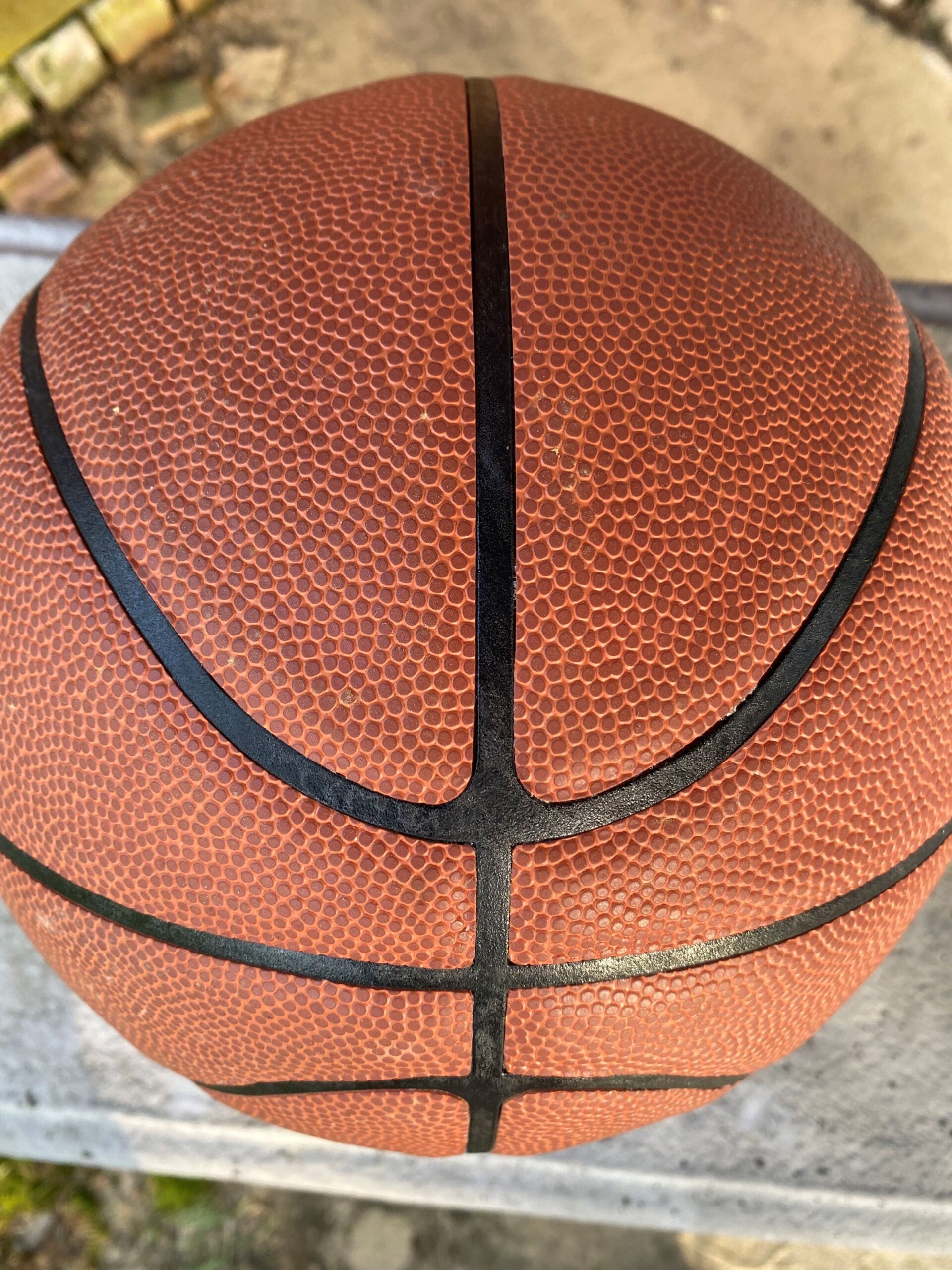Sideline out of bounds or SLOBs are plays where the ball is taken out of bounds on the sideline of the court on the offensive end. Depending on the time of the game and the score of the game these present opportunities for the offensive team to possibly get an open shot. As a coach, it is always a good idea to have a handful of these plays to use at just the right moment in a game or season to get a basket. So here are 5 SLOB plays to possibly help you and your team.
Play 1
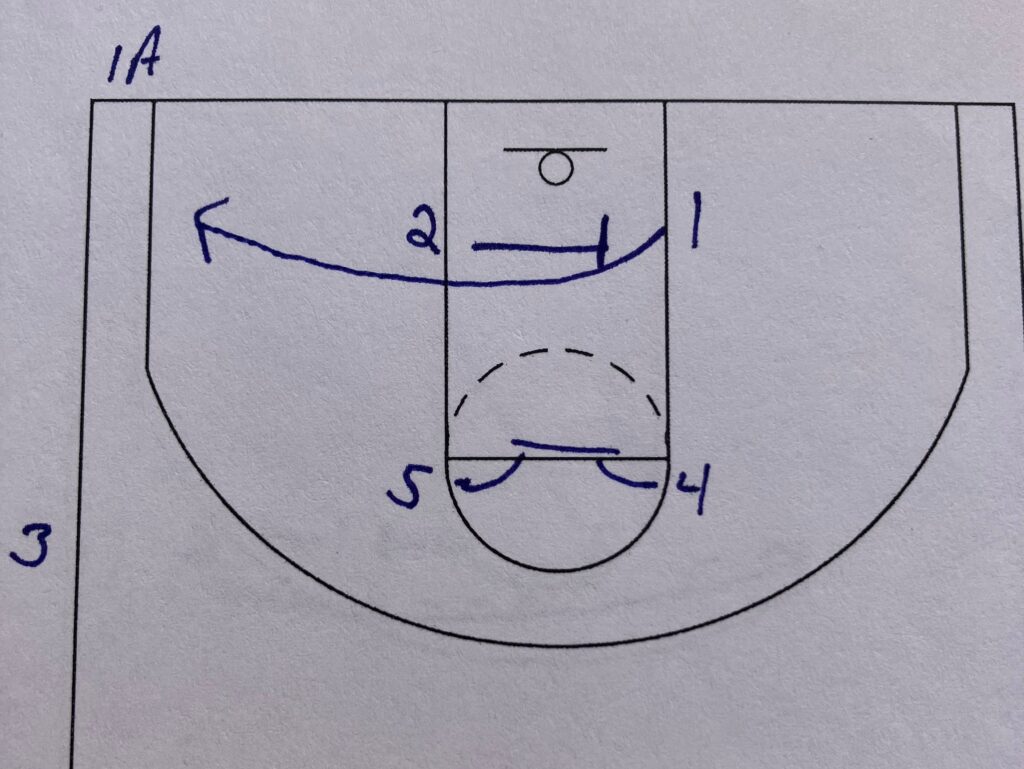

The first play is a simple two movement play. The ballside block player(2) is the shooter. The backside block(1) could be changed to a post player but it can be difficult to make a pass straight from the sideline to the post so I like a guard here to run out to the corner to hopefully take a defender or two moving towards the corner and away from the top of the key. The other two players are on the elbows.
The shooter(2) sets an away screen for the 1 man. The 1 man runs into the corner. After the away screen, the two elbow plays come together for an elevator screen. If everything goes well, then the ball is entered straight to the shooter(2) after the elevator screen for a wide open 3.
This is a play that could be ran with just a couple of seconds left on the clock. In a last second situation this is a good play that gets some movement and misdirection with a nice double screen right at the end to get the shooter open.
Play 2

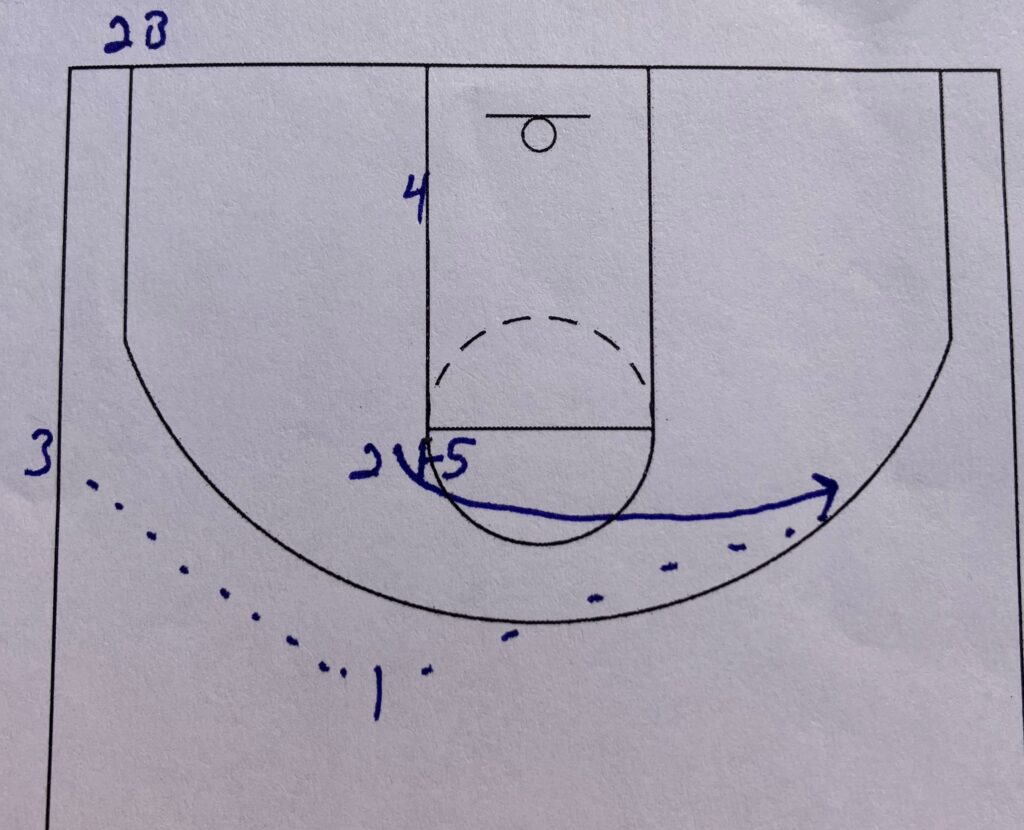
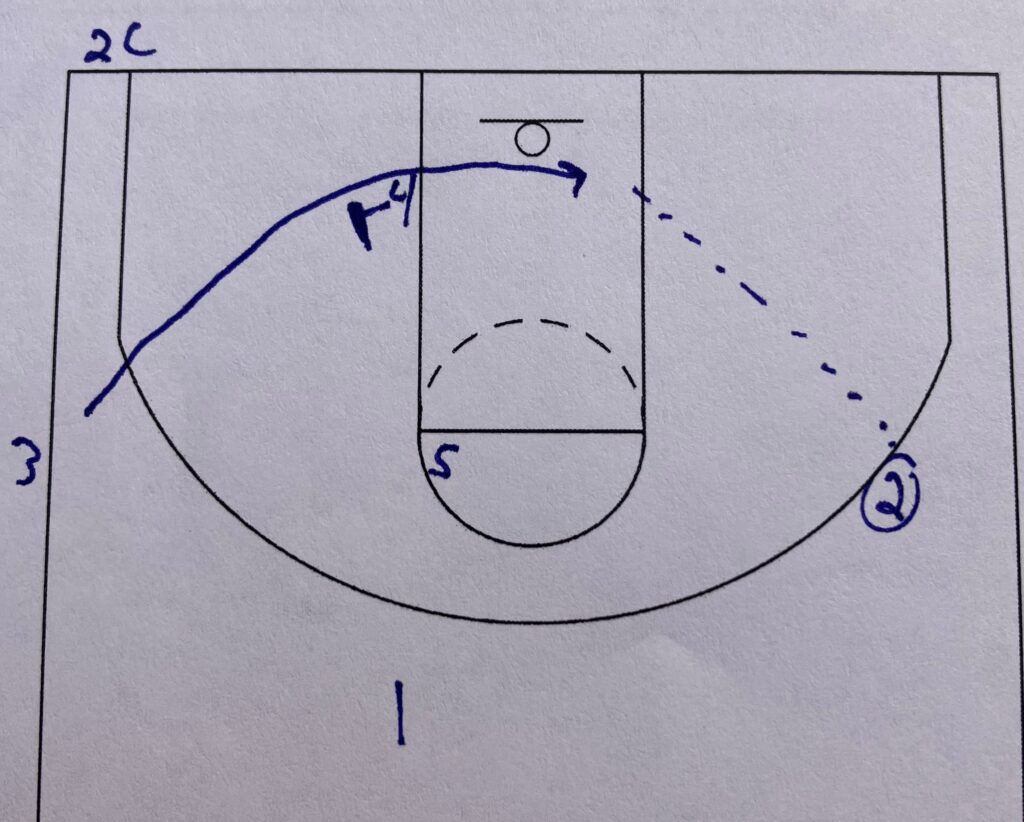
This play starts in the same box formation but if the shooter is still the 2 man as the first play then they have come to ballside elbow while the big goes to the backside block. I want the backside block to be a big body and good screener. I also want my shooter in the ballside elbow position to start.
It starts with the 1 man running up the lane line to the top for the entry pass. As the 1 man starts up the two backside players come across the lane. This helps to clear out the entire backside which is where the ball is going to end up. By coming across this creates a bunch of space for the end of the play to work.
The 5 man sets a screen for the 2 man to now go to the backside with all the cleared out space. I want my shooter as the 2 man going into this spot because if the defense gets caught on the frontside then my shooter may have a shot right off of this cross-screen. The 1 man completes the reversal of the ball to the 2 man. Now we have changed the attacking point of the offense which flips the defense as well.
Off of the entry pass the inbounder(3) runs through the block which the 4 man is now setup to screen for the 3. If the shooter(2) does not have a shot, then the 3 man should be coming open off of the screen for an easy layup. The final reason I want my shooter in this last passing position is because if the 3 man does not get the shot off then my shooter(2) should relocate after the pass for a kick-out 3.
Play 3

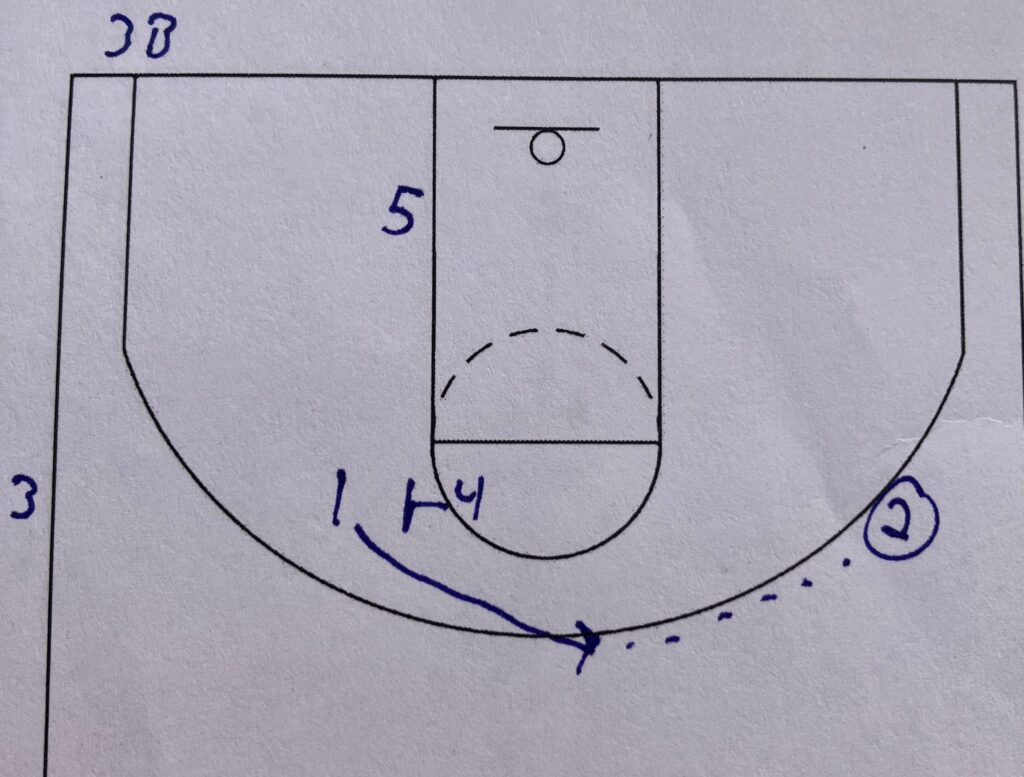
This play starts in a stack formation. The last player in the line(5) is running straight to the ballside block. This is again just trying to clear out the backside where the ball is going. The shooter(2) is now running as the decoy. The shooter is turning and running away from the ball off of a double screen. The ball is entered on the skip pass over the top. I am wanting the defense to see the shooter and the skip pass and have multiple players go rushing out to the shooter.
After the double screen, the 3rd man in line(4) is going to set a 2nd screen for the 1 man. On the skip pass catch, the 2 man passes back to the 1 man coming off that 2nd screen for a 3 right at the top of the key. The hope is to change the point of attack, have the defense rush the shooter, and then pass back away from the rushing defenders for a wide open 3.
Play 4


I like this play in 2 different scenarios. The first is when there is only a couple of seconds left on the clock. The 2nd situation is to get a dunk straight off the entry pass. It starts with a block formation just like the 1st 2 plays I outlined above. The backside elbow clears to the ball side corner. This clears the entire backside of the court. The ballside block is stepping away from the block towards the sideline. It really does not matter if the 5 man steps towards the corner or towards the inbounder but he does need to move away from the basket to clear as much space as possible around the basket. These 2 players are just moving to create the space for the play to work.
On the initial start of the play the ballside elbow(4) is going to step up to the 3 point line. This creates more space for the screen and screener. The backside block(1) is going to come up and set a backscreen for the 4 man. I want this screen to take place as close to the 3 point line as possible. I like the 1 man in this spot because his defender is probably going to be one of the smaller players so the lob pass has more of a chance of success. After the backscreen, the pass is a lob pass straight to the 4 man off of the backscreen.
Play 5
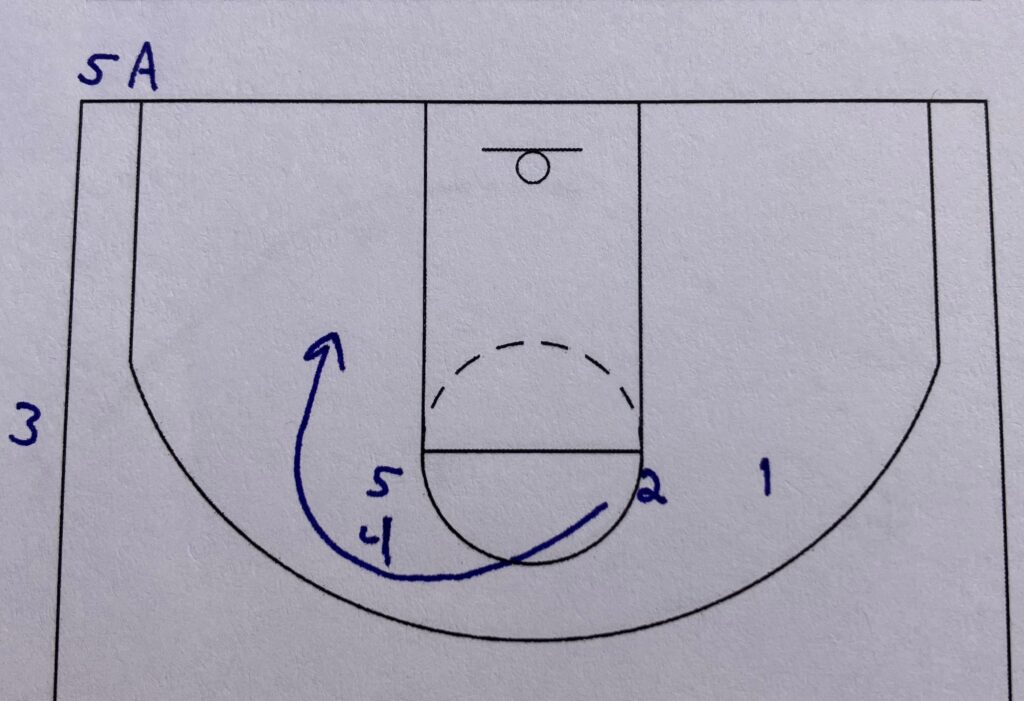
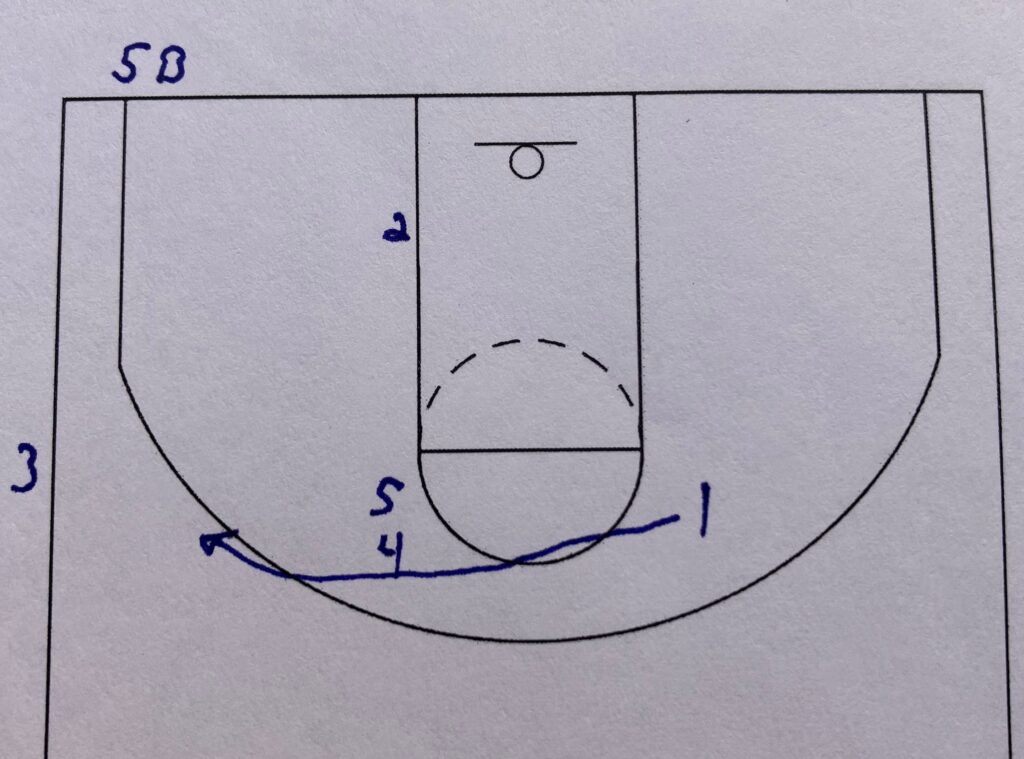
This last play is a simple play but works so well. The idea is to put everybody in a tight group and have one player pop out of the group wide open. The 4 and 5 men start shoulder to shoulder. The 1 and 2 are behind the 4 and 5. They are lined up with the ball. In the diagram, the 1 man is getting the shot because they are in the back. On the ref giving the ball to the 3 man, the 2 man runs around the double screen and curls tight to the screen going back to the basket. Then the 1 man follows the 2 but instead of curling, they run around the circle for the entry pass and shot.
The idea is simple. The defender of the 1 man should not have anywhere to go. If they try to go over the double screen then the 1 man should come around with the defender behind him so he should be able to get the shot off. If the defender tries to got underneath the double then the 2 man should curl around the screen and try to basically run into the defender which frees up the 1 man that much more.
Conclusion
A sideline out of bounds gives the offense a chance to get an easy shot. As a coach, I would have a set of SLOB plays for the vast majority of the time but then have a few like the 5 above to run when you absolutely need to get a good shot. If you run the plays too much then opponents will be able to scout the plays and they have a lower chance of working. So these 5 plays are ones I may work on in practice but only run once or twice an entire season. It is always a good idea to keep a trick or two hidden away for just the right time you need to use it.

